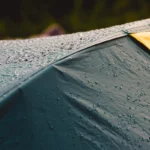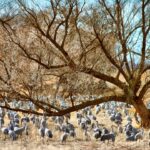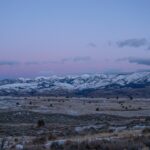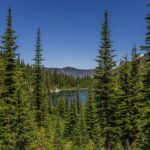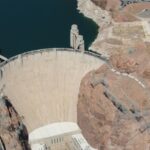America is home to some of the most iconic and popular national parks in the world, such as Yellowstone and Yosemite. However, there are also many hidden gems waiting to be explored. These lesser-known national parks offer a unique and off-the-beaten-path experience for visitors. In this article, we will delve into the importance of exploring these hidden parks, the unique features and landscapes they offer, the best trails and hikes to embark on, the wildlife and natural wonders that can be found, the best times to visit, the challenges and rewards of exploring these parks, and how to plan a trip to these lesser-known destinations.
The Importance of Preserving America’s Hidden Gems
National parks play a crucial role in preserving America’s natural and cultural heritage. They protect and conserve diverse ecosystems, rare species of plants and animals, and important historical sites. However, the impact of tourism on these parks can be detrimental if not managed properly. Popular national parks often face issues such as overcrowding, damage to natural resources, and increased pollution. By promoting and protecting lesser-known national parks, we can help alleviate some of these issues.
Promoting access to lesser-known national parks not only helps distribute tourism more evenly but also allows visitors to experience a more authentic and intimate connection with nature. These hidden gems offer a sense of solitude and tranquility that is often hard to find in more popular parks. By exploring these lesser-known destinations, visitors can discover new landscapes, learn about different cultures, and contribute to the preservation of these unique places.
The Top 10 Least Visited National Parks in America
1. Gates of the Arctic National Park – Located in Alaska, this park is one of the most remote and least visited in the country. It offers stunning views of rugged mountains, pristine rivers, and vast expanses of wilderness.
2. Isle Royale National Park – Situated in Lake Superior, this park is only accessible by boat or seaplane. It is known for its untouched forests, crystal-clear lakes, and diverse wildlife, including moose and wolves.
3. North Cascades National Park – Located in Washington state, this park is often overshadowed by its more famous neighbor, Mount Rainier National Park. However, it offers breathtaking alpine scenery, glaciers, and numerous hiking opportunities.
4. Kobuk Valley National Park – Located in Alaska, this park is home to the Great Kobuk Sand Dunes, one of the largest active sand dune systems in North America. It also offers opportunities for wildlife viewing and wilderness camping.
5. Guadalupe Mountains National Park – Situated in Texas, this park is known for its rugged mountains, desert landscapes, and diverse plant and animal life. It offers numerous hiking trails, including the challenging hike to the summit of Guadalupe Peak, the highest point in Texas.
6. Wrangell-St. Elias National Park – Located in Alaska, this park is the largest national park in the United States. It features towering mountains, glaciers, and a rich mining history.
7. Great Basin National Park – Situated in Nevada, this park offers a unique combination of desert landscapes and alpine environments. It is home to ancient bristlecone pine trees, Lehman Caves, and Wheeler Peak, the second-highest peak in Nevada.
8. Congaree National Park – Located in South Carolina, this park protects one of the largest intact expanses of old-growth bottomland hardwood forest in the southeastern United States. It offers opportunities for hiking, canoeing, and wildlife viewing.
9. Dry Tortugas National Park – Situated off the coast of Florida, this park consists of seven small islands and is known for its crystal-clear waters, coral reefs, and historic Fort Jefferson.
10. Black Canyon of the Gunnison National Park – Located in Colorado, this park features dramatic cliffs, deep canyons, and the Gunnison River. It offers opportunities for hiking, camping, and wildlife viewing.
The Unique Features and Landscapes of America’s Hidden National Parks
America’s hidden national parks offer a diverse range of landscapes and features that are often overlooked. From remote wilderness areas to unique geological formations, these parks have something for everyone.
For example, Gates of the Arctic National Park in Alaska is known for its rugged mountains, vast tundra, and pristine rivers. It is a true wilderness experience, with no roads or trails leading into the park. Visitors can explore the park by hiking, backpacking, or flying in with a bush plane.
Isle Royale National Park in Lake Superior is a remote island wilderness that offers untouched forests, crystal-clear lakes, and abundant wildlife. It is home to one of the longest-running predator-prey studies in the world, focusing on the relationship between wolves and moose.
North Cascades National Park in Washington state is often referred to as the “American Alps” due to its stunning alpine scenery. It features jagged peaks, glaciers, and numerous hiking trails. The park is also home to over 300 glaciers, making it one of the most glaciated regions in the United States outside of Alaska.
The Best Trails and Hikes in America’s Least Visited National Parks
America’s hidden national parks offer a wide range of hiking opportunities for all skill levels. Whether you’re looking for a leisurely stroll or a challenging trek, these parks have something to offer.
In Gates of the Arctic National Park, there are no established trails, but visitors can explore the park by backpacking or bushwhacking through the vast wilderness. The park offers opportunities for multi-day treks and remote camping.
Isle Royale National Park offers over 165 miles of hiking trails, ranging from easy day hikes to multi-day backpacking trips. The Greenstone Ridge Trail is a popular option, offering stunning views of the island and Lake Superior.
North Cascades National Park has a variety of hiking trails, ranging from easy nature walks to challenging alpine routes. The Cascade Pass Trail is a popular choice, offering breathtaking views of glaciers, mountains, and alpine meadows.
The Wildlife and Natural Wonders of America’s Hidden National Parks

America’s hidden national parks are home to a diverse range of wildlife and natural wonders. From rare species to unique geological formations, these parks offer a wealth of natural beauty.
For example, Gates of the Arctic National Park is home to a variety of wildlife, including grizzly bears, wolves, moose, and Dall sheep. It also features stunning natural wonders such as the Arrigetch Peaks, a cluster of granite spires that rise dramatically from the tundra.
Isle Royale National Park is known for its population of wolves and moose. The predator-prey relationship between these two species has been studied for decades. The park also offers opportunities for birdwatching, with over 200 species of birds recorded on the island.
North Cascades National Park is home to a wide range of wildlife, including black bears, mountain goats, and bald eagles. The park also features unique geological formations such as glaciers, waterfalls, and alpine meadows.
The Best Times to Visit America’s Least Visited National Parks
The best time to visit America’s hidden national parks depends on the specific park and the activities you plan to engage in. However, there are some general guidelines to consider when planning your trip.
In general, summer is the most popular time to visit national parks due to the warmer weather and longer days. However, this also means that parks can be crowded during this time. If you prefer a quieter experience, consider visiting in the shoulder seasons of spring or fall.
For example, Gates of the Arctic National Park is only accessible during the summer months, typically from June to September. The weather can be unpredictable, with temperatures ranging from freezing to hot. However, this is also the best time to see wildlife and explore the park’s vast wilderness.
Isle Royale National Park is open from mid-April to late October. The summer months are the most popular, but the shoulder seasons offer a quieter experience. Fall is particularly beautiful, with the changing colors of the leaves.
The Challenges and Rewards of Exploring America’s Hidden National Parks
Exploring America’s hidden national parks comes with its own set of challenges and rewards. While these parks offer a unique and off-the-beaten-path experience, they also require careful planning and preparation.
One of the main challenges of visiting lesser-known national parks is the lack of infrastructure and amenities. Many of these parks have limited visitor services, such as campgrounds, visitor centers, and paved roads. This means that visitors need to be self-sufficient and prepared for remote and rugged conditions.
However, the rewards of exploring these hidden gems are well worth the effort. These parks offer a sense of solitude and tranquility that is often hard to find in more popular destinations. Visitors can experience a deeper connection with nature and have a chance to explore untouched landscapes.
How to Plan a Trip to America’s Least Visited National Parks
Planning a trip to America’s hidden national parks requires careful research and preparation. Here are some tips to help you plan your adventure:
1. Research the park: Learn about the specific park you plan to visit, including its location, climate, activities, and regulations. Check the park’s website for up-to-date information.
2. Determine the best time to visit: Consider factors such as weather, crowds, and wildlife viewing opportunities when choosing your travel dates.
3. Plan your itinerary: Decide how many days you want to spend in the park and what activities you want to engage in. Make a list of must-see sights and prioritize your time accordingly.
4. Make reservations: If camping or lodging is available in the park, make reservations well in advance. Some parks have limited accommodations, so it’s important to secure your spot early.
5. Pack appropriately: Be prepared for the specific conditions of the park, including weather, terrain, and wildlife encounters. Pack essential items such as appropriate clothing, food, water, and navigation tools.
6. Follow park regulations: Respect the rules and regulations of the park, including wildlife viewing guidelines, camping restrictions, and trail etiquette. Leave no trace and help preserve the park for future generations.
The Future of America’s Hidden National Parks: Preserving and Promoting Access
Preserving and promoting access to America’s hidden national parks is crucial for their long-term sustainability. These parks offer unique experiences and contribute to the conservation of natural and cultural heritage.
Efforts are being made to promote and protect these lesser-known destinations. For example, organizations such as the National Park Foundation and the National Parks Conservation Association work to raise awareness about these parks and support their preservation.
As visitors, we can also play a role in preserving and promoting access to these hidden gems. By visiting these parks responsibly, respecting the environment, and supporting local communities, we can help ensure that these places remain protected for future generations to enjoy.
In conclusion, America’s hidden national parks offer a unique and off-the-beaten-path experience for visitors. By exploring these lesser-known destinations, we can discover new landscapes, learn about different cultures, and contribute to the preservation of these unique places. It is important to promote and protect these hidden gems to ensure their long-term sustainability. So plan your trip, pack your bags, and embark on an adventure to America’s least visited national parks.
If you’re interested in exploring America’s least visited national parks, you might also enjoy reading about Overlanding America’s unique approach to travel. Overlanding America is a website dedicated to providing adventurous travelers with the resources and information they need to embark on epic overland journeys across the United States. Their article on “The Ultimate Guide to Overlanding in America” offers valuable insights and tips for those looking to experience the beauty and solitude of lesser-known national parks. Check it out here!
FAQs
What are the least visited national parks in America?
According to the National Park Service, the least visited national parks in America include Gates of the Arctic, Kobuk Valley, Lake Clark, Isle Royale, and North Cascades.
Why are these national parks the least visited?
These national parks are often remote and difficult to access, with limited infrastructure and amenities. They may also be overshadowed by more popular national parks nearby.
What can visitors expect to see at these national parks?
Visitors can expect to see stunning natural landscapes, including mountains, glaciers, lakes, and wildlife. These parks offer opportunities for hiking, camping, fishing, and other outdoor activities.
How can visitors prepare for a trip to these national parks?
Visitors should research the park beforehand and be prepared for the remote and rugged conditions. They should bring appropriate gear and supplies, including food, water, and camping equipment. Visitors should also be aware of the park’s regulations and safety guidelines.
Are there any guided tours or ranger programs available at these national parks?
Yes, many of these national parks offer guided tours and ranger programs. Visitors should check with the park’s visitor center or website for more information and schedules.
What is the best time of year to visit these national parks?
The best time to visit these national parks varies depending on the park and the activities visitors are interested in. Generally, summer is the most popular time to visit, but spring and fall can offer milder weather and fewer crowds. Winter can be a great time for winter sports and wildlife viewing.

